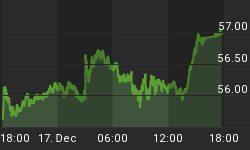Myron S. Scholes of Long Term Capital Management, won one-half the 1997 Nobel Peace Prize in Economic Sciences "for a new method to determine the value of derivatives."
In September of 1998 LTCM ran into a glitch as their Laureate's method began to run amok. At the beginning of 1998, LTCM held capital of $4.8 billion, a portfolio of in excess of $200 billion (credit facilities) and derivatives with a notional value (how much capital a given derivative effectively controls) of $1.25 trillion.
The investors who dared to ask questions were told to "take their money somewhere else".
On September 23, 1998 William J. McDonough, president of the New York Federal Reserve Bank enlisted LTCM's counter parties to bail out the fund which was for all intents and purposes bankrupt. The counter parties provided $3.6 billion in return for a 90% share in the fund and the promise a supervisory board would be established
Simply put, a Nobel Laureate's "derivative model" wrought disaster, only to be bailed out by the very counter parties it had "insured" against risk.
The government's intervention to save LTCM served to expand the "moral hazard" furthering the expectation of bailouts among speculators with an appetite for risk. I would suggest this type of intervention only serves to further heighten the risks.
The leverage employed by LTCM indicates the firm was clearly speculating upon convergence of interest rates, Alan Greenspan and Bob Rubin's nod gave McDonough the go-ahead for an arranged bailout as they, in their own words, believed it could very well bring down the economy due to the magnitude of the "LTCM shock."
LTCM's notional aggregate of $1.25 trillion implies extreme leverage used in its pyramid of derivative positions against capital of $4.8 billion.
I believe it is fair to assume the higher the leverage employed, the higher degree of aggregate risk to a specific portfolio. The leveraged speculators have recently exceeded $230 trillion in aggregate.
Since the LTCM debacle, Chairman Greenspan has attempted to protect the "real economy" with even less transparency in this unregulated "over the counter" market.
Derivatives are financial products whose value is "derived" from an perceived "underlying" asset value.
By example, stock options are based on the underlying value of the stock that the option enables the purchaser to exercise their "strike price" at a point in the future. Futures contracts are used by "producers" to protect themselves from various risks associated with price fluctuations in a specific market. A commodity contract would be derived from the underlying price of the good to be bought or sold at a specific date in the future.
In addition to Stocks, Indices and other Market Indices, the term "Asset", in the derivatives sphere, also includes Currencies and Interest Rates
An important distinct needs between "price" and "value" needs to be addressed before venturing further into the derivative abyss:
Value: An amount, as of goods, services, or money, considered to be a fair and suitable equivalent for something else; a fair price or return.
Price: The amount as of money or goods, asked for or given in exchange for something else.
Derivatives have intrinsic value, meaning they are priced to derive the underlying value of "something". Clearly we can assume "pricing mechanisms" are subjective when unbound from the very markets structure via "modeling" or perhaps in today's global financial pyramid... by "intervention".
By example, derivatives allow investors to partition various aspects of an asset, and trade those partitions separately, rather than as a whole.
The problem arises when Price / Value matrix fails to conform.
Collateralized Debt Obligations have recently appeared as one of the more popular types of derivatives. They are certainly one of the most dangerous.
Consider this straight forward exercise:
A mortgage is purchased and then sold with Overnight Rates at historic lows. Then recognize in excess of 50% of the these mortgages are adjustable. Real Rates, beyond the control of the Federal Reserve without monetization of the long end, have risen dramatically, putting many types of derivatives in peril.
Understand that Commercial Banks and Trusts make up the majority of this unregulated market and then breath deeply.
These mortgage obligations have been purchased and sold, packaged, securitized and then hedged using various derivative methodologies.
And what we have is a complete mess: grossly overvalued "assets" trading as collateral in a negative real rate environment, levered beyond reason to insure "safety" of the financial system.
I'll venture a guess... I would suggest this is nothing more than an LTCM type speculation by orders of magnitude and keep hearing Bob Rubin's "panic" when describing the potential for disaster.















